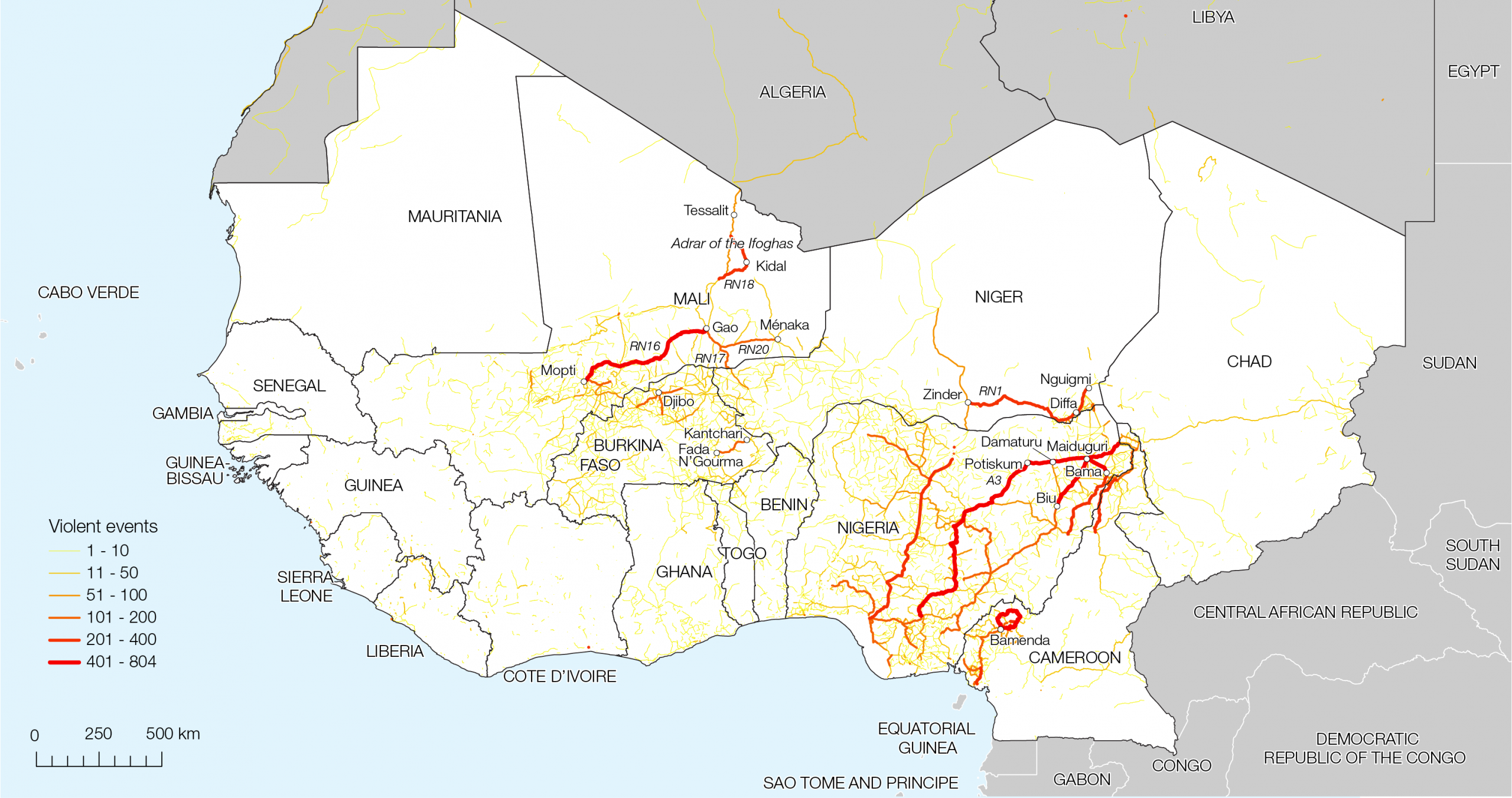
This article analyses the patterns of violence produced by the competition for the control of transport infrastructure between state and non-state actors in West Africa from 2000 to 2024.
Using disaggregated road and conflict data from the Global Roads Inventory Project (GRIP) and Armed Conflict Location & Event Data (ACLED) project, the paper first shows that the road infrastructure attracts a disproportionate share of violent events.
The paper then shows that transport-related violence is becoming less concentrated over time, and that specific road segments are repeatedly targeted, particularly in the Central Sahel, Lake Chad basin, and western Cameroon.
These findings suggest that the proximity of violent events to the road network mirrors the temporal evolution of local insurgencies. The proportion of events near roads increases in the early stages of the insurgency, before declining as insurgent expand to more remote and rural regions.
The duality of the transport infrastructure, as both a facilitator and target of violence, has put government forces at a disadvantage. Regular forces are heavily constrained by the sparsity and poor conditions of the road network, which makes them vulnerable to attacks without necessarily allowing them to project their military power over long distances.
Walther, O. J., Radil, S. M. and Thurston, A. (2025). Political violence and transport infrastructure in West Africa. African Security Review, DOI: 10.1080/10246029.2025.2502017.